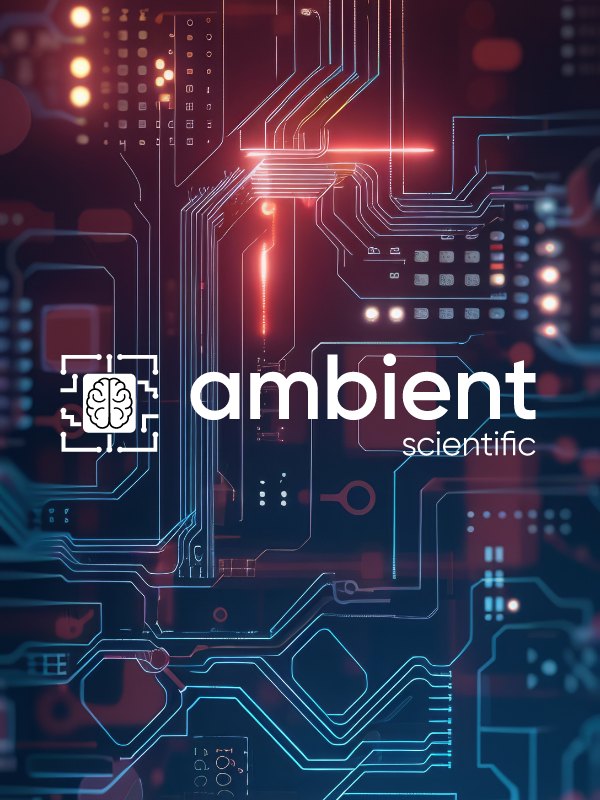Ambient Scientific
Ambient Scientific is a Silicon Valley startup that has developed a new AI processor based on analog-circuit techniques. CEO Gajendra Singh, previously VP of Engineering at Wave Computing, launched the company in 2017. It remained in stealth mode until its 2019 announcement of the GPX-10, which followed the close of its $17 million Series A funding. The company sampled the chip in 4Q20 and planned to start production in 2Q21, but we believe it has postponed that plan while prospective customers evaluate the device. Ambient has about 70 employees.
Key Features and Performance
Although TSMCmanufactures the GPX-10 in 40nm embedded-flash technology, Ambient’s design employs standard CMOS transistors to implement analog multipliers, rather than the flash-based approach of Mythic. The MAC-unit arrays, which the company calls DigAn cores, execute 256 analog MAC operations per cycle.
As in other analog DLAs, we believe themultipliers employ a simple transconductance property, yielding the product of their inputs according to Ohm’s law. INT4, INT8, or INT16 operands from SRAM feed into digital-to-analog converters (DACs) that create the analog multiplier inputs. Analog-to-digital converters (ADCs) sum themultiplier outputs, converting the result to a digital output.
DigAn cores also include eight digital ALUs that perform integer operations at up to 32-bit precision. The ALUs handle biasing, normalization, and general arithmetic. The activation engine comprises both digital and analog components. An SRAM array stores a multisegmented lookup table that provides a coarse collection of activation data points for processing by mixed-signal logic.

The GPX-10 integrates 10 DigAn cores that together can deliver 512 GOPS. A Cortex-M4 CPU controls the DLA’s operations, loading neural-network parameters froma 512KB embedded flashmemory. Customers can also connect external flash to the SPI port. The CPU and DLA cores can use the 320KB integrated cache for temporary storage.
The SoC can operate in a variety of power states: always-on voice detection, always-on fault detection, and activemode. With all systems running at maximum specifications, it consumes 120mW. For always-on voice commands and fault detection, the power drops to just 80microwatts, allowing the GPX-10 to operate froma small battery. We estimate the chip provides only 0.3 GOPS at this power level.
Ambient additionally developed a five-coremodel called the GPX-5 that delivers 256 GOPS. Whereas the larger chip targets on-device inference and training, the GPX-5 only runs inference. It also omits embedded flashmemory and replaces the Cortex-M4 CPU with a Cortex-M0. The company specifies power at amaximumof 1.5mW for keyword recognition after wake-up and 60microwatts in always-on standby mode.
Conclusions
Although Ambient claims its design can execute AI models at up to 32-bit precision, analog circuitry suffers inaccuracies due to physical effects that don’t affect digital circuitry. Device mismatch will cause identical multipliers to produce different results, whereas temperature and voltage variations cause those operations to drift over time. Therefore, we believe such an analog approach is adequate for nomore than the 8-bit precision typical of inference engines.
Nevertheless, by achieving 4.25 TOPS per watt at its peak performance of 512 GOPS and 3.75 TOPS per watt at its minimumpower of 80uW, the GPX-10 is well suited to low-power devices that run on a battery. For example, it delivers more than 10x the throughput of GreenWaves’ GAP9 at about twice the power. But many analog-compute companies develop impressive test chips that never reach production. Ambient must clear that hurdle to attract the funding necessary to develop a complete software stack. The GPX-5 will compete with Syntiant’s NDP10x for keyword spotting. Whereas the digital NDP10x consumes about 140microwatts and is a complete solution, however, Ambient’s chip consumes 10 times more power and requires external flashmemory for program storage.
Recently Published AI
The era of AI is here. TechInsights provides you with unique end to end insights, from the chips to the devices to its usage.
Xiaomi Unveils XRING O1 in Flagship 15S Pro
Xiaomi surprises the industry with its custom XRING O1 chip debuting in the flagship 15S Pro, while MediaTek secures the 5G modem slot.
Sony PlayStation 5 Pro Teardown
TechInsights' teardown of the Sony PlayStation 5 Pro (CFI-7021) reveals a custom AMD RDNA 3.0 processor, expanded memory, Wi-Fi 7 support, and a detailed BOM comparison with the original PS5.
Discover the latest semiconductor industry insights in Chip Observer May 2025 — from SanDisk’s spin-off and NAND market shifts to AI-driven SoC growth and geopolitical impacts on chip supply chains.













